Vegetable gardening mistakes – 10 key errors to avoid when growing crops at home
These are 10 of the biggest errors you can make in your vegetable garden
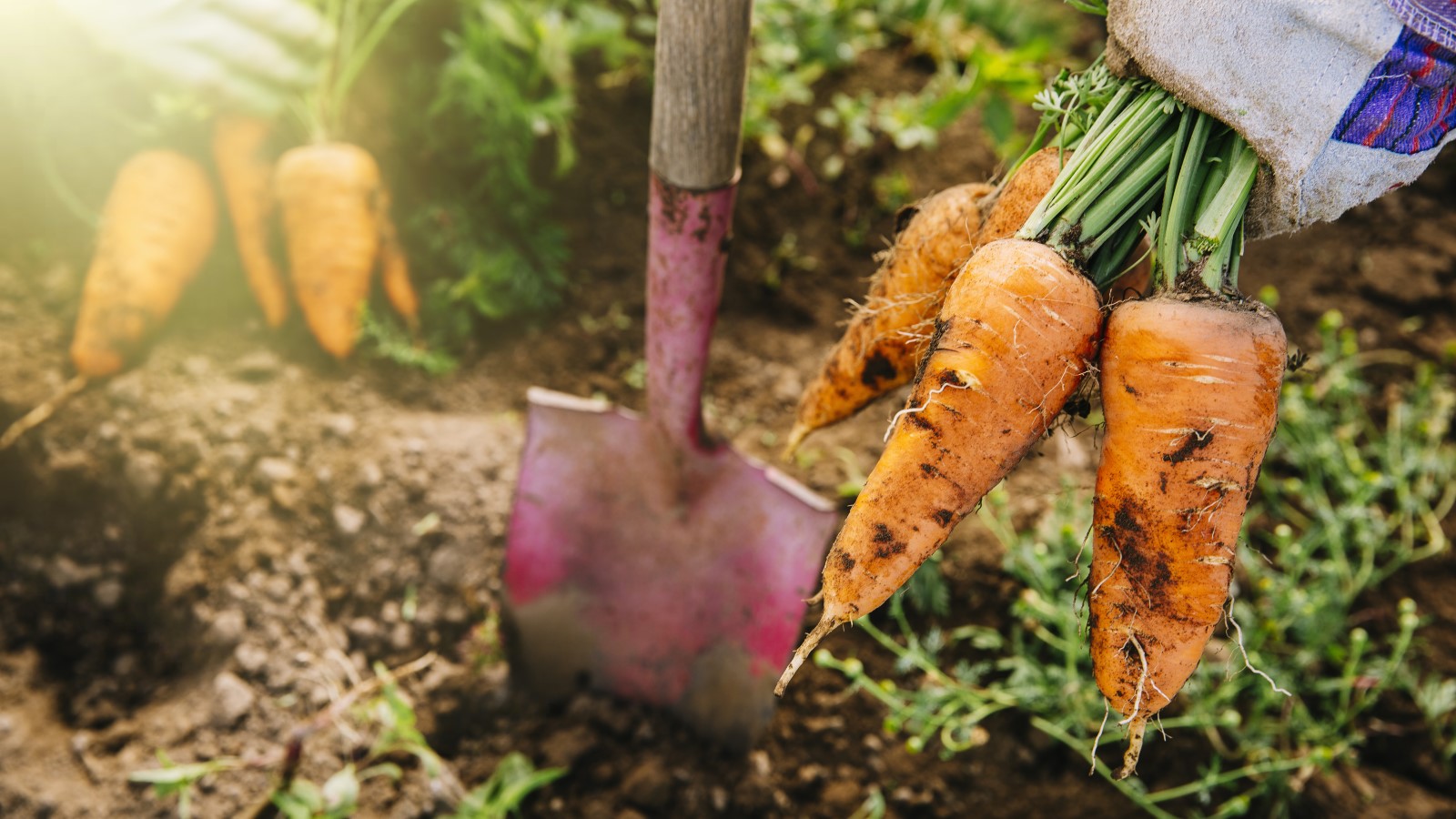

Growing vegetables is a fantastic and highly-rewarding past-time enjoyed by millions of people around the world. It does take experience to successfully grow crops and there are some common vegetable gardening mistakes that people make when starting out.
There are factors that are going to be out of your hands, for example you cannot control the sun or the rain. There are things, however, that you can manage. That includes where and when you plant your vegetables and how you tend to your garden.
I have grown vegetables for close to a decade, starting small with some raised beds in an urban garden to running a two-acre walled garden growing for chefs. If you are looking for how to start a vegetable garden, then here are some lessons I have learned over the years to help you overcome many common vegetable garden problems.
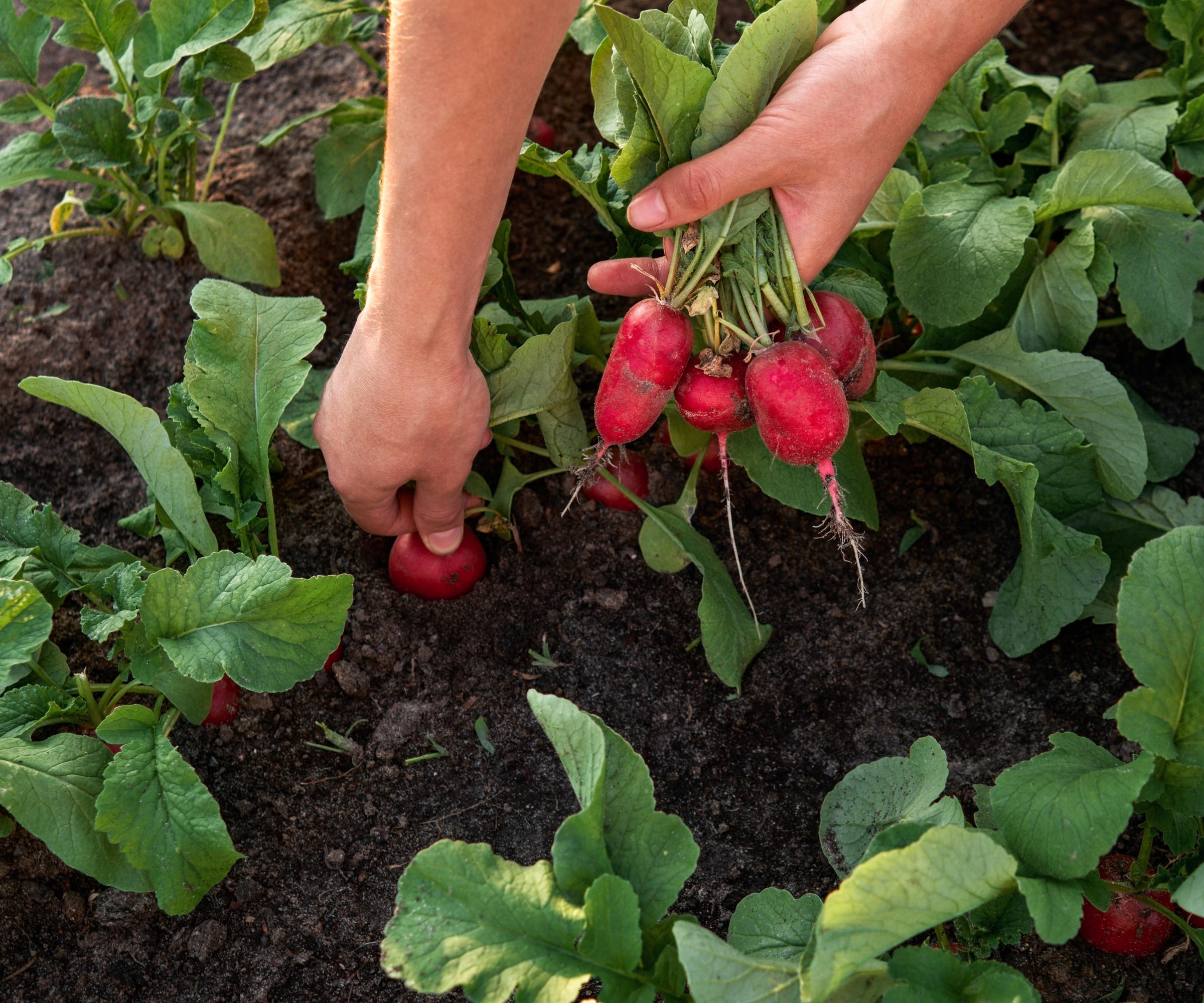
Radish are one of the simpler vegetables to grow at home
10 common vegetable gardening mistakes
When it comes to how to maintain a vegetable garden, there can be several reasons why a plot is not producing bumper harvests. Discover some of the common vegetable gardening mistakes that can result in disappointing plants and low yields, together with expert advice for how to avoid or deal with those mistakes.
1. Planting too early
It is understandable that many new vegetable gardeners have issues with timing, usually down to eagerness. We all get excited with lots of vegetable garden ideas and have fallen foul of starting seeds early or planting veggies out into the garden as soon as possible.
The first days of sun of the year can lead many gardeners to assume the better weather is here and to get going full-steam-ahead on their gardening. However, starting seeds too early or planting the crops out before the right time can lead to a range of issues, and very rarely does it end well.
Ben Hilton of The Gardening Fix says it ‘almost always backfires’ when people jump the gun and go early with seeds or plants. He adds: ‘Cold and wet soil, along with low night-time temperatures stress young plants leaving them underdeveloped and vulnerable. Poor germination and damping off will also impact success rates, often leaving with too few final plants to fill your veg beds.
‘Be patient, and plant out when the soil is warm and frosts have passed, the plant growth rate is much faster and the tender plants are far more resilient.’
Resist the temptation to go early and always pay attention to the recommended timings when it comes to seed packets or plant guides. Going early is a real seed sowing mistake to avoid, so is rushing when it comes to planting. It reduces the chance of wasted time and effort in sowing seeds, being wasteful with seeds or compost, or ending up killing any precious plants you have grown or bought.

Wait till early spring when soil temperature reaches 45˚F to plant your early potatoes
2. Picking a bad spot
When growing vegetables, it is imperative to choose the best spot in which your plants will grow to their full potential. The correct spot will mean the healthiest plants and the biggest harvests. There are some vegetables to grow in shade, however most plants want sun and light in order to prosper. When thinking about a space to grow vegetables, or planning a kitchen garden, there are a few key parameters you need to get right.
Janet Loughrey of Garden Design claims: ‘One of the most common mistakes when siting a vegetable garden is placing it in an area with too little light. Provide a site that receives at least 6-8 hours of full sun per day.’
As well as light, the soil is hugely important as it will also dictate how well your plants grow. The ideal soil wants to be loose and well-draining and with a neutral pH. It is recommended to get your soil tested to understand fully the soil type, pH, and nutrient make-up. While it is hard to adjust the level of light and sun that a spot can get, at least with the soil you can make adjustments. Janet Loughrey advises: ‘Amend soil with compost or other rich organic matter and make sure the soil drains well.’
When you start your vegetable garden, no matter which approach you take such as digging or trying no dig gardening, always incorporate organic matter, whether it is homemade compost, well-rotted manure, or leaf mold. The addition of this organic matter not only helps with drainage, but it boosts the nutrients in the soil and also improves the structure. These are all key components in growing healthy plants.
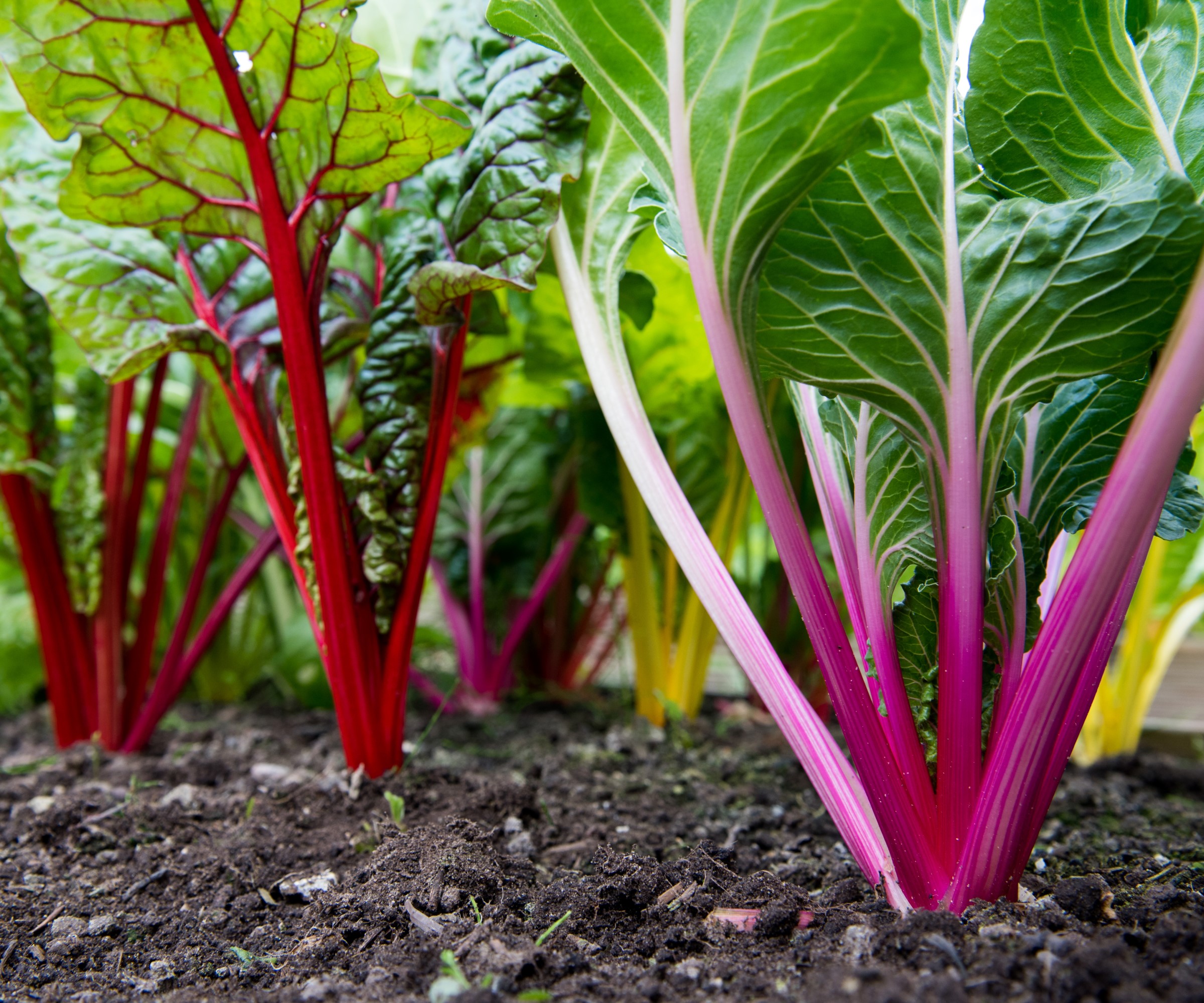
Chard is one vegetable crop that will happily grow in shade
3. Taking on too much
It can be tempting to go big when it comes to starting a vegetable garden, however that could go against you long-term. It can be really rewarding to start and succeed with a small vegetable garden rather than convert a large space and then struggle to look after it. That struggle could be really demoralizing and easily put anyone off vegetable gardening.
You want to enjoy the process and not get frustrated or stressed out by it. So it is also recommended that anyone new to the hobby starts small. Though it may be tempting as you flick the catalogs to want to grow everything you can, a small space and a few select vegetables is the perfect way to start. Even if you have converted a large space, rather than give up then just cover some of that space with plastic or cardboard sheets. Those coverings will do the job of suppressing weeds and the soil will be in great condition when you remove them and plant in there.
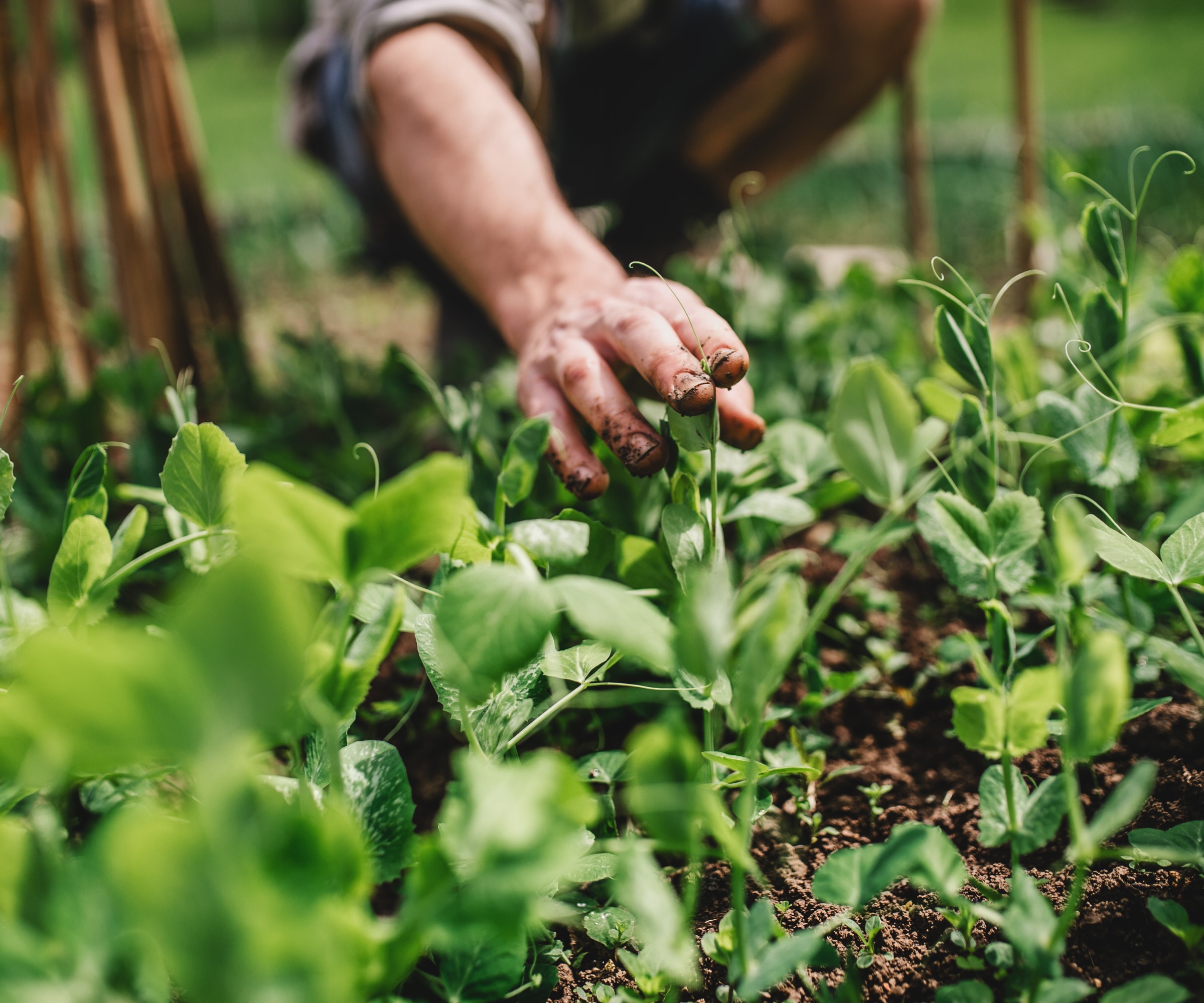
Peas are perfect to grow in a small vegetable garden
4. Planting too close together
As with planting dates, it always pays to take heed of the recommended planting spaces typically seen on seed packets. There is always a desire to squeeze as many plants as possible in any vegetable garden – however it is a fine line juggling space requirements and potential harvests.
Putting too many plants into too small a space will leave them all cramped and battling for water and nutrients. Crowded plants will compete for resources and that limits both their growth and productivity. Giving each plant the space it requires to grow and mature is vital for healthy plant growth and high yields.
Luay Ghafari of Urban Farm and Kitchen admits: ‘For a new gardener, it’s difficult to visualize the space requirements of a crop by simply looking at a seed packet or by holding a small seedling full of potential.
‘That 5 inch pumpkin seedling will grow into a 12 inch vine under favorable conditions. That corn seed will germinate and could grow into a 6 inch stalk. I always tell my clients and students to think about the plant at maturity. Understanding how big it should grow will help determine the spacing needed at planting time.’
The old adage is that ‘proper planning prevents poor performance’ and that is applicable to growing vegetables. If you plan your plot properly before sowing or planting and mark out the spacings each crop requires, then it means each plant will have sufficient room to grow and ultimately give you the best crops.
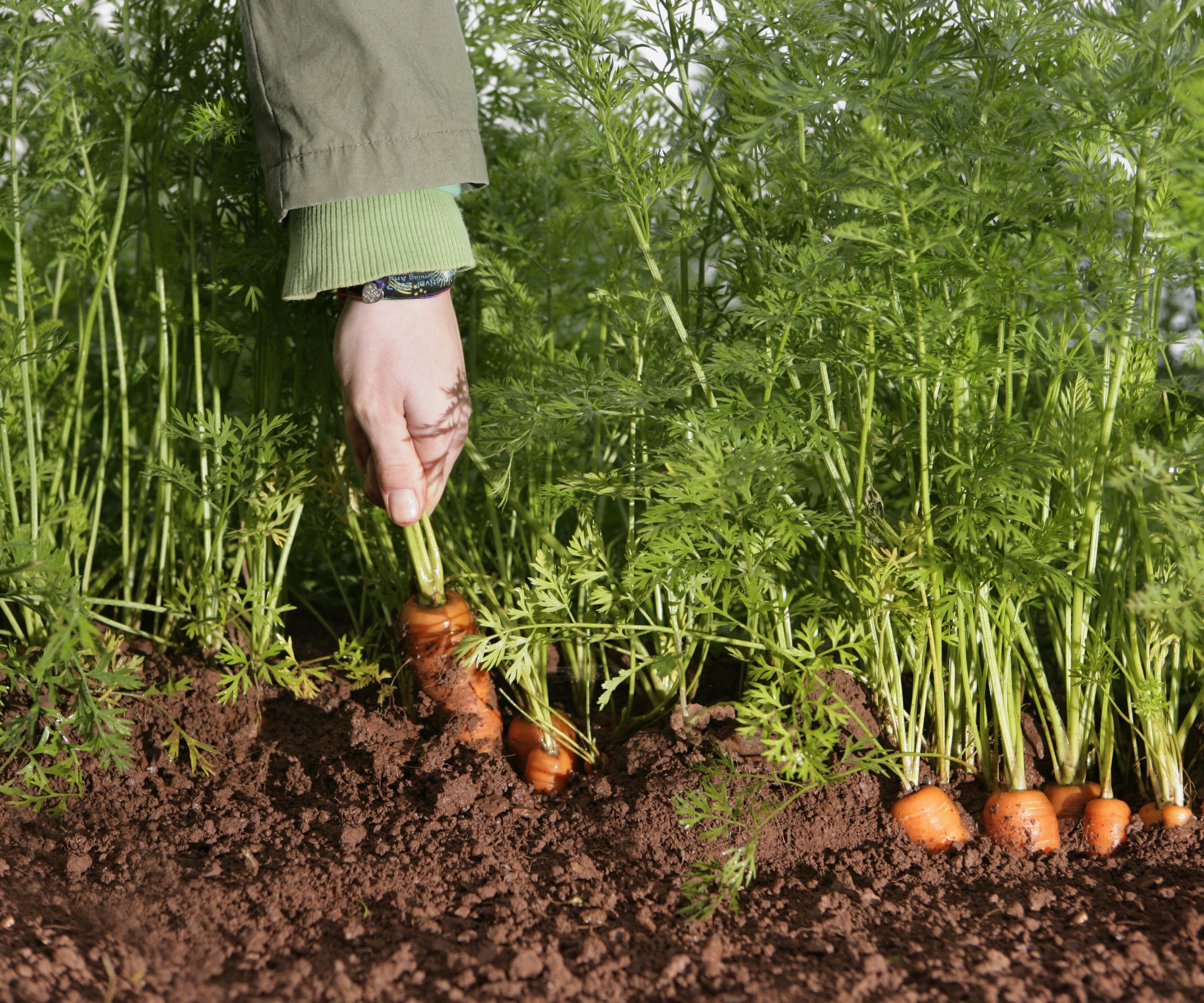
Thin out carrot seedlings so they have room to grow
5. Picking the wrong crops
Andy Tait from True Green Nursery issues a stark reminder to growers that ‘not all vegetable plants thrive in all climates and soil types’. He says: ‘Planting the wrong crops for your region or soil can lead to poor growth and low yields. It is important to research the best crops for your area and to choose varieties that are well-suited for your soil type and climate.’
The dangers of growing vegetables in the wrong climate zones means they never develop into full plants. For example, onions are categorized as short day, intermediate, and long day onions and planting the wrong types in the wrong areas is a common onion growing problem. It all depends on the level of daylight hours the variety needs to start forming bulbs. Planting a short day type in northern climates will result in small onions, while long day varieties in the south will never form bulbs.
Research is going to be key to make sure that what you pick to grow is right for your climate and soil types. Get your soil tested to understand its type and see if any amendments need to be made. Read up on vegetable types to get an idea of what succeeds in your area, or visit farmers markets to see what local growers are growing in a similar climate to yours. All of these aspects will make sure you don’t fall foul of growing the wrong crops for your location.
Also, growing vegetables in the wrong position will lead to underdeveloped plants and poor yields – even a high degree of failure. This tends to be common for heat-loving plants such as tomatoes or eggplants that aren’t given enough sun to succeed. Always grow crops that suit your garden’s climate and level of sunlight. By monitoring the hours of sun you get, you can play to your strengths and make sure you pick the vegetables that are suited to your particular conditions. If you also have the luxury of being able to plan a greenhouse or a polytunnel into your garden, then more heat-loving crops will be suitable for you.
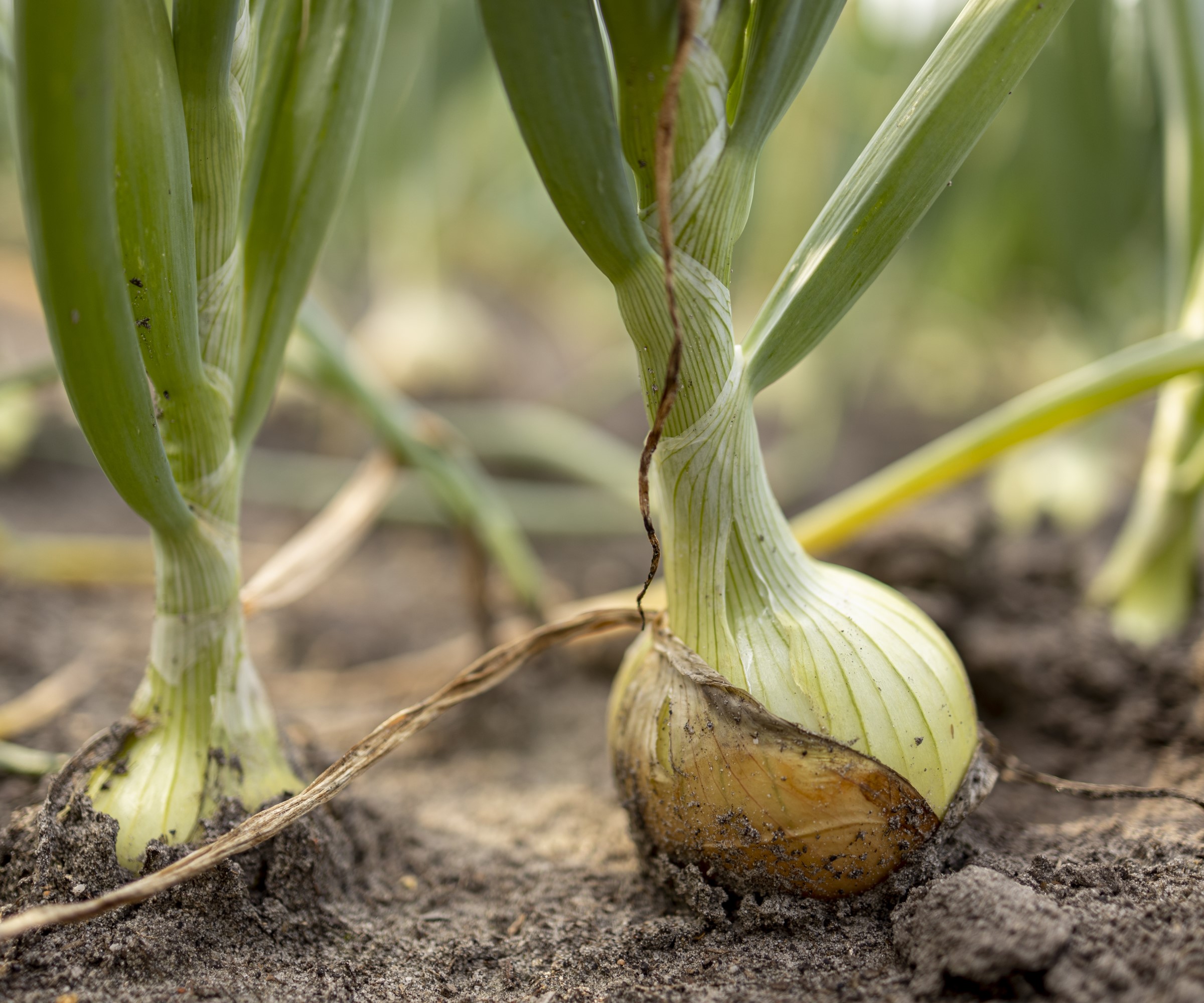
Short day onions are better suited for southern climates
6. Not improving the soil
Improving your soil is a never-ending process for the gardener and you always need to be developing, improving, and maintaining the soil quality. The primary nutrients for plant health are nitrogen, phosphorus, and potassium. These will be present in different quantities in your soil and getting your soil tested should give you an idea of its nutrient mate-up. There are ways to add more nutrients of one type – such as to add phosphorus to soil to help with healthy roots and strong growth – or to alter the pH is required.
There are methods in which to continually develop or improve the soil, including mulching a vegetable garden by adding well-rotted manure or garden compost to boost nutrients, structure, and drainage. Nowadays there is also the common principle of no dig, or no till, gardening that sees compost added on top rather than being dug in. You should never skimp when it comes to your soil as it is absolutely vital to the health of your plants and the harvest you will get.
Ben Hilton of The Gardening Fix reiterates that soil preparation is ‘one of the three most important factors of vegetable gardening along with light and irrigation’. He adds: ‘Cultivate your soil 6-12 inches deep, to add air and improve drainage. If your soil is poor or heavy, add organic material to improve its texture and nutrients. Finally check the soil pH is between 5.5-7.0, otherwise amend with sulfur or lime.’
Fertilizers can be used throughout the growing season as short-term enhancements to boost the soil and there are also aspects such as green manures that can be used to add nutrients into the soil.
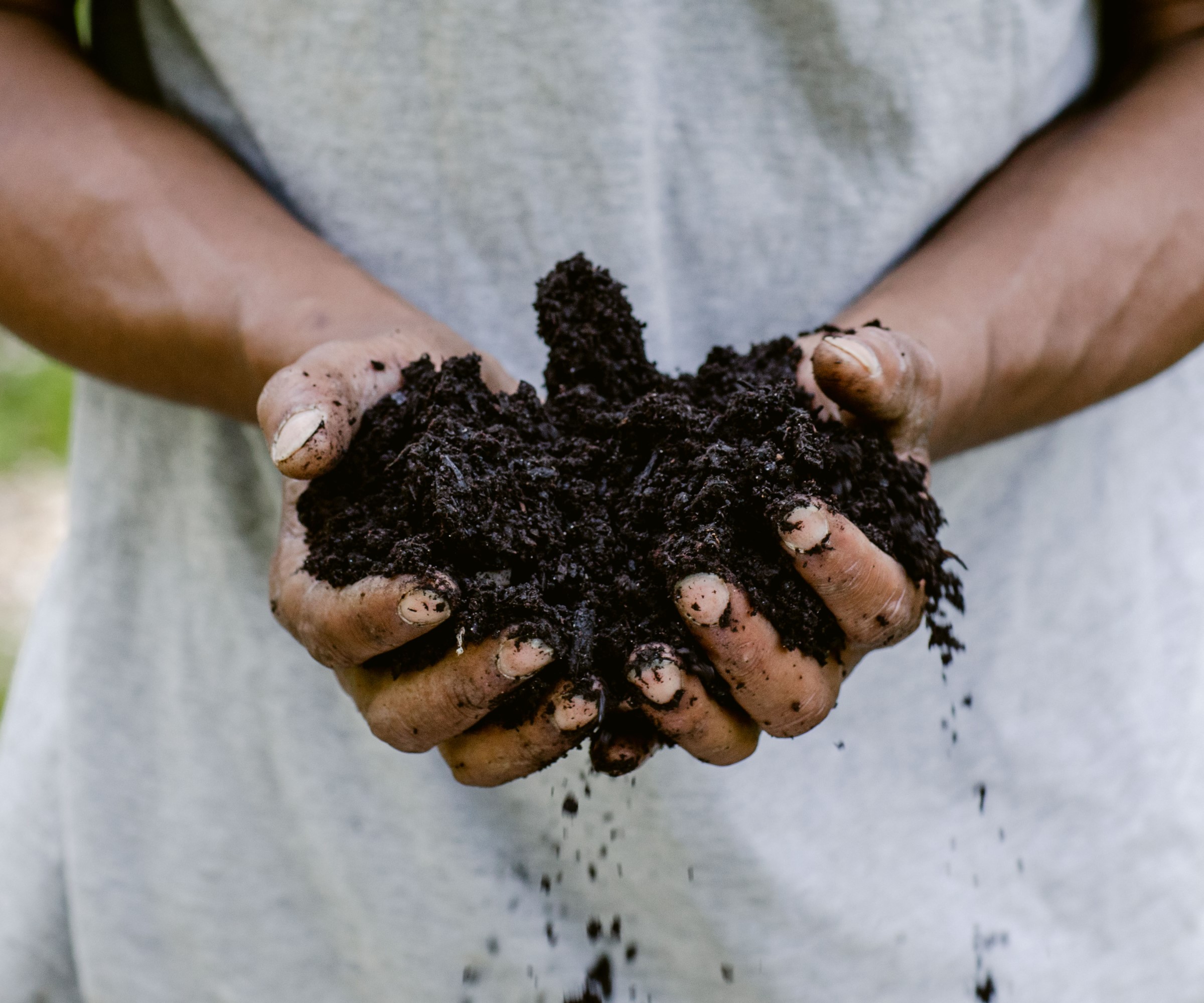
Loam has a loose texture and is the ideal soil for vegetables
7. Growing more than you need
Along with taking on too much space, growing more than one household consumes is also a very common issue that hits vegetable growers annually. As well as there being so many vegetables you can grow, and so many different varieties of each one, it can be difficult to predict how much yield you will get per plant. A great example of this is growing zucchini, as I have not known any vegetable grower that has not ended up with a glut of zucchini.
As well as limiting the different crops you grow, such as focusing purely on vegetables, fruit, and herbs that your household eats, also restrict the number of plants you grow. This is especially recommended for crops you have never grown before.
A good tactic is to be prepared to get good at preserving, as you cannot rely solely on giving away excess vegetables to friends, family and neighbors when the peak of summer arrives and the vegetable garden is so bountiful.
Bob Flowerdew, organic gardening expert for Homes & Gardens, recommends it is ‘better to process your surplus into something that lasts longer’ than just handing away harvests
‘Fruits are easily frozen, jammed, jellied, juiced, dried or bottled,’ he says. ‘One relatively simple safe way of processing vegetables is pickling, especially when also cooked, salted or brined first.
‘Sadly, although pickling works well with onions, gherkins, red cabbage and beetroots, many other vegetables are just not interesting to eat when pickled. But we can chutney those.’
Again, this is where planning beforehand is key. Try to plan what you want to eat when picking crops, what is a reasonable number of plants to avoid gluts, and how you can preserve vegetables if you do have a surplus.
Also, think of succession planting to try to space out your harvests and avoid any potential gluts of everything being ready at once. A good example of this is with how to grow beets, as you can space out sowings at regular intervals such as every fortnight. This ensures a constant stream of beets at the right size for picking over an extended period, rather than a huge amount that are all ready for harvesting at the exact amount of time – which could be overwhelming.
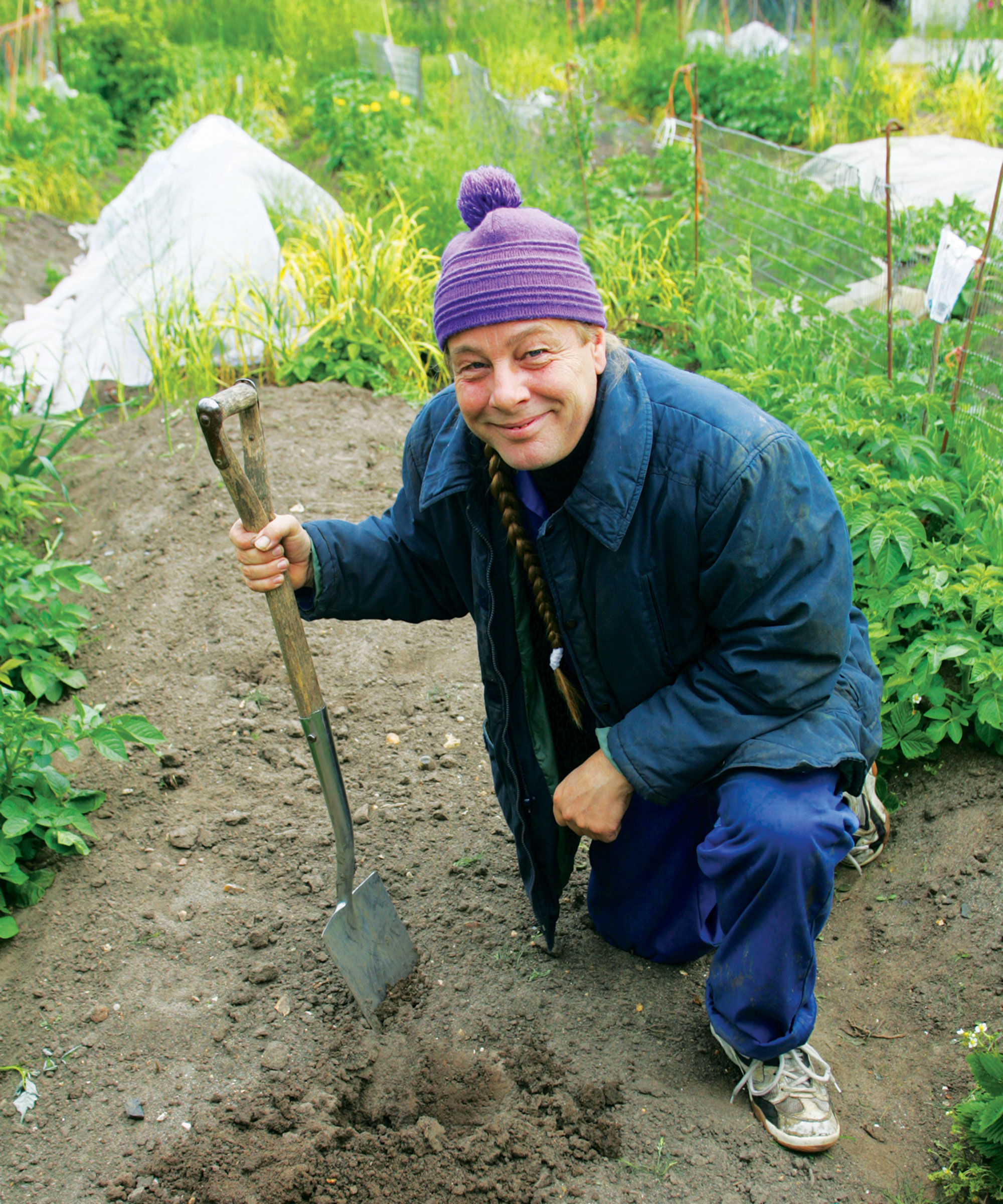
Bob Flowerdew is the organic expert for Amateur Gardening magazine in the UK. Every week he writes about a wide range of gardening tasks and offers advice on how to create a sustainble, eco-friendly garden. He has also written a wide range of books on organic gardening methods, all available on Amazon
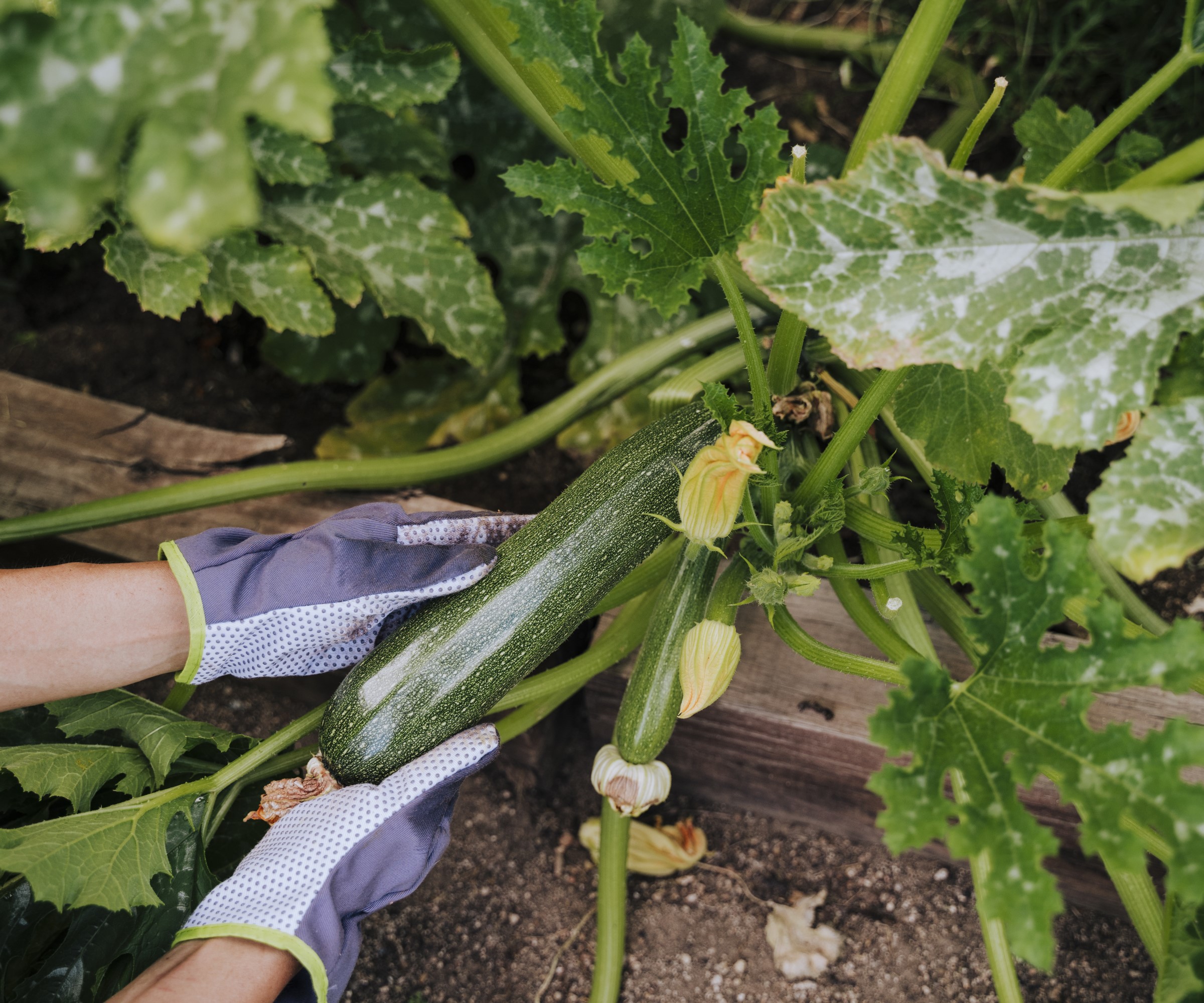
Most vegetable growers have experienced a glut of zucchini
8. Struggling with weeds
Unfortunately weeds are always going to be a problem in any vegetable garden. There is no way of avoiding weeds, they are a constant. However, it is how you deal with them that dictates whether you can keep on top of them, or get swamped.
To start off with, the approach of no dig when creating beds can smother weeds under cardboard and layers of compost, and such beds can even be made directly onto weedy areas. Even if you do not go no dig, new beds need to be weeded carefully, especially with perennial weeds that need to be removed fully, including the roots.
Weeds will enter the garden, blown in on the wind from neighbors or seeds brought in by animals. Some seeds can live dormant in the ground for many years before deciding to germinate. It is always better to take a regular approach to weeds, hitting them frequently and when they are little is the easiest way to keep on top.
Homes & Gardens gardening expert Ruth Hayes agrees that the ‘key to keeping on top of weeds is to do little and often’ and she advises running a hoe blade over your vegetable beds every week.
Ruth says: ‘This is better than forking and digging as it doesn’t activate buried weed seeds. It cuts off the weedlings and I leave them to rot down and feed the soil. I make an exception for perennial weeds such as dandelions, which need digging up roots and all.
‘For environmental reasons I prefer to use elbow grease rather than chemicals to get rid of weeds.’
You can use chemicals to get rid of weeds, but it is not advised to use chemicals around vegetable plants. You need to check on the label to see if the product is safe to use around edible plants. It is much better to regularly tackle the weeds by hand.
There are other options, such as growing your crops through weed-suppressant materials or, if a section does get really weedy, then you can smother them using cardboard or plastic.

Ruth is the gardening editor of Amateur Gardening magazine, the UK's oldest weekly magazine. She is horticulturally trained and has qualifications from the Royal Horticultural Society. Ruth spends her working days writing about and photographing the gardening jobs that our readers should be carrying out each week and month, and tests many new products that arrive on the gardening market.
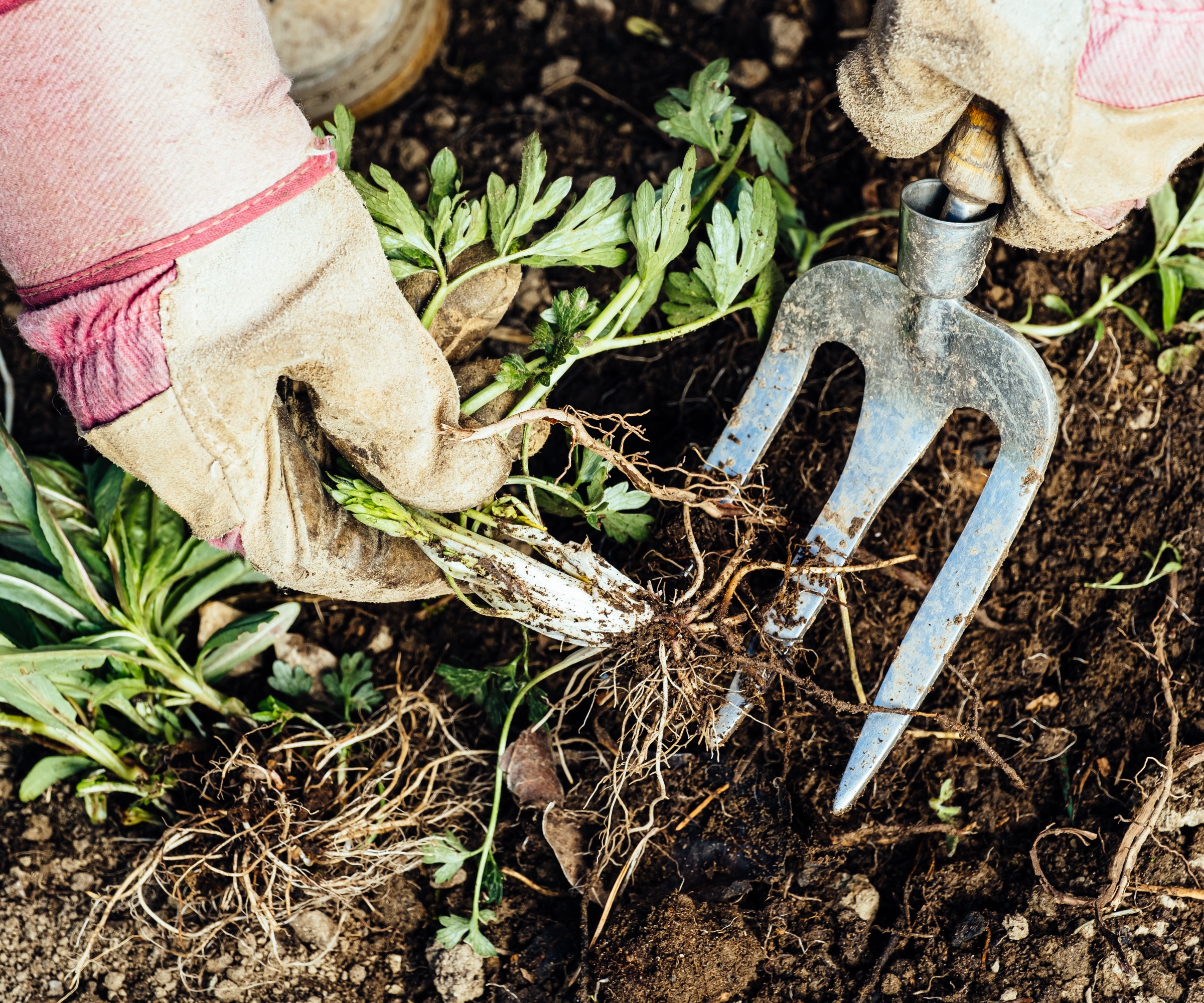
Little and often is the best way to deal with weeds
9. Not protecting the garden
There is a huge range of animals or pests that will want to nibble on your crops, from the tiny aphid to a deer. You will always face challenges to protect your precious vegetable plants and it is imperative to do what you can to keep these critters away from crops. The levels of protection you need to put in place will depend on your location and local pests. If there is a risk of deer you may need a fence as big as eight feet high, while fences for small burrowing animals need to be buried at least one feet deep as well as being up to four feet high above the ground.
Fences can come in many shapes and sizes for a vegetable garden and they are the most reliable method to keep larger animals out of the garden, though if you do not want a permanent structure then there are more natural options for protection. Companion planting, for example, is a valuable organic method to keep animals from munching on your plants. It is capable of keeping a wide range of pests away. David Angelov, CEO & Founder of PlantParenthood, says: ‘Plant garlic or onion bulbs surrounding the vegetable beds, the green stalks emit an odor and a taste that bunnies and squirrels stay away from! It acts as a low, natural fence.’ As well as garlic or onions, marigolds are a great option for deterring rabbits.
Other tactics to consider for keeping animals out include using decoys, such as decoy predatory birds, or the likes of spinning wheels or old CDs. Utilizing raised beds or growing vegetables in containers can also keep ground-dwelling animals at bay, as long as they are tall enough.
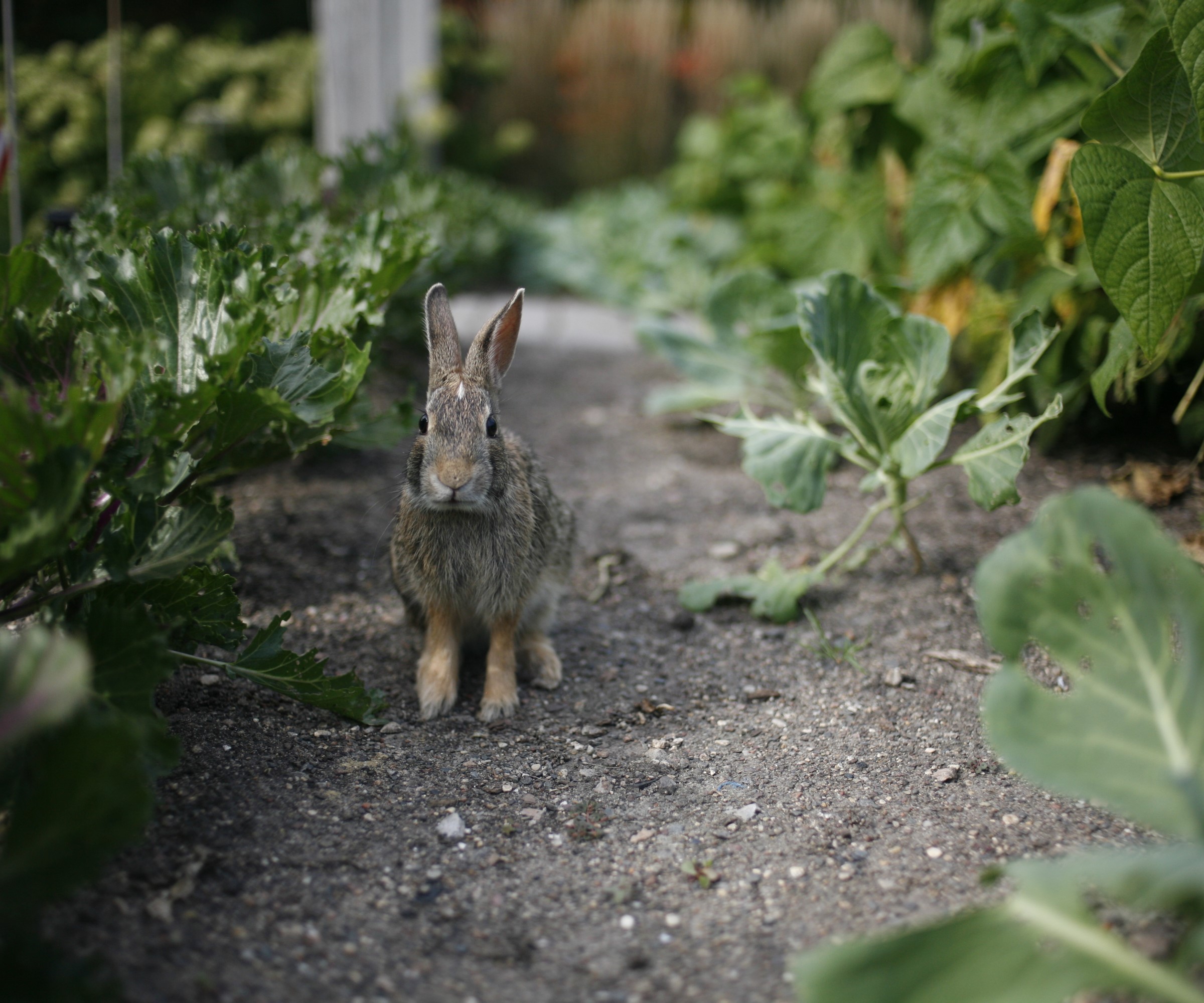
Rabbits can wreak havoc on a vegetable patch
10. Not feeding crops
Soil and water both play important roles in vegetable crops growing well and giving you a yield, however you can further boost the available nutrients and ultimate harvest by using fertilizers.
Such fertilizers offer concentrated forms of essential nutrients, primarily based on nitrogen (N), phosphorus (P) and potassium (K) and on any plant fertilizer label you will see references to NPK and its make-up in the form of a ratio, eg. 10-10-10. Healthy soil can be enough to successfully grow vegetables and fruit, but the addition of fertilizers can help get an increased yield.
Fertilizers can come in organic and synthetic forms and can either be applied as a granular feed, liquid feed, or a spray-on foliar form. Liquid feeds are quicker and easier to take up, but can be more easily washed away, while granular forms last longer. Always apply any feed at the rate recommended by the manufacturer, as over-applying can cause serious harm to the plants.
There are fantastic organic feeds that can be made at home, from the likes of comfrey, borage, or nettles. Comfrey, in particular, both attracts pollinators and takes up large amounts of nitrogen, phosphorus and potassium that is stored in the leaves.
Ruth Hayes advises making a rich comfrey fertilizer that can be used to feed vegetable plants. She says: ‘Simply crush the leaves in a bucket and add a lid, as the solution will stink to high heaven as the leaves rot down. Check the bucket every few weeks, pouring off and collecting any liquid that has collected and adding more leaves. When you come to use your comfrey liquid, dilute it in 10 parts of water first.’
Feeding crops is one task that can be regularly overlooked when the pressures of watering, weeding, and harvesting all add up. Plan fertilizing crops into your maintenance regime for the vegetable garden and you will be fully rewarded with bigger yields.

Granular fertilizers are sprinkled around plants and need to be watered in
Growing vegetables need not be complicated and new gardeners should not be disillusioned by reading these vegetable garden problems. A lot of them are very simple to prevent and, with a little bit of research, you can still plan the vegetable garden of your dreams. There will always be challenges when it comes to growing, but they help build experience and develop you as a gardener.
Sign up to the Homes & Gardens newsletter
Design expertise in your inbox – from inspiring decorating ideas and beautiful celebrity homes to practical gardening advice and shopping round-ups.

Drew’s passion for gardening started with growing vegetables and salad in raised beds in a small urban terrace garden. He has worked as a professional gardener in historic gardens and specialises in growing vegetables, fruit, herbs, and cut flowers as a kitchen gardener. That passion for growing extends to being an allotmenteer, garden blogger, and producing how-to gardening guides for websites. Drew was shortlisted for the New Talent of the Year award at the 2023 Garden Media Guild Awards.
-
 'Big results before you know it' – Experts urge you to use the ‘Take Away 10’ method for simple decluttering with zero decision fatigue
'Big results before you know it' – Experts urge you to use the ‘Take Away 10’ method for simple decluttering with zero decision fatigueIt can cut hundreds of items from your home in just a few weeks
By Ottilie Blackhall
-
 Kevin Bacon and Kyra Sedgwick's rustic kitchen island is stunning, but controversial – designers say you can get the look without the hassle
Kevin Bacon and Kyra Sedgwick's rustic kitchen island is stunning, but controversial – designers say you can get the look without the hassleA popular material finds an unorthodox home in the couple's kitchen, but experts disagree on whether it should be used – here's how to do it instead
By Sophie Edwards